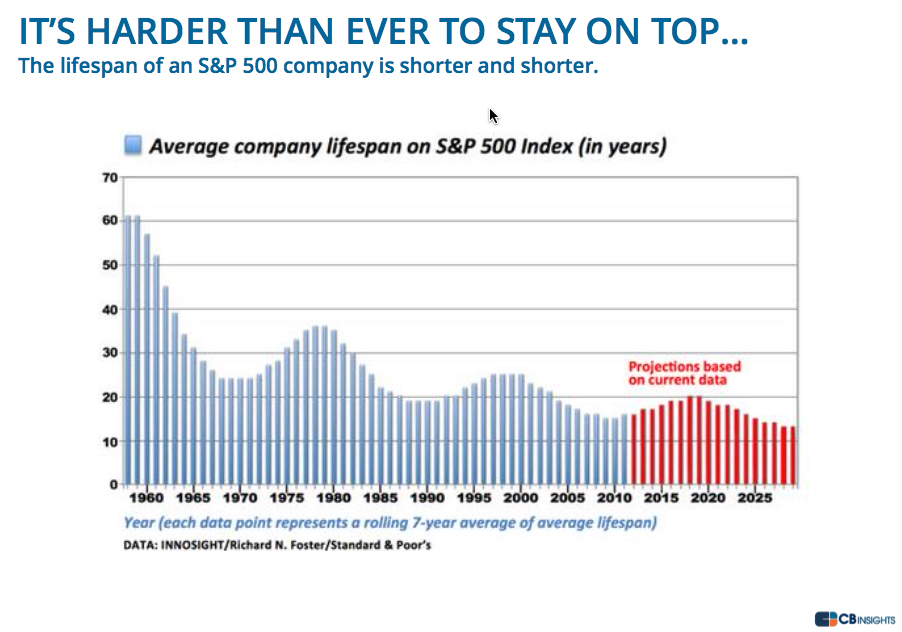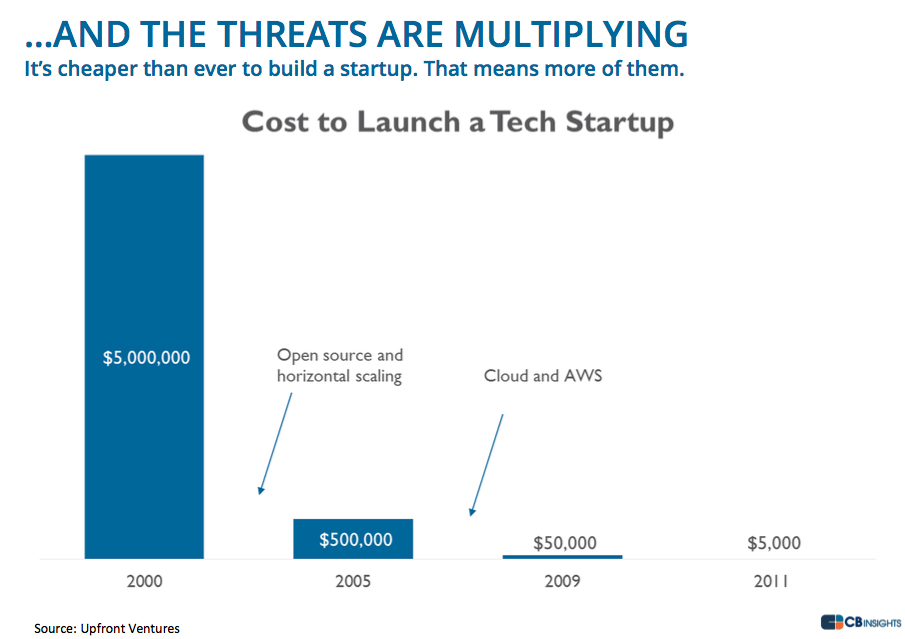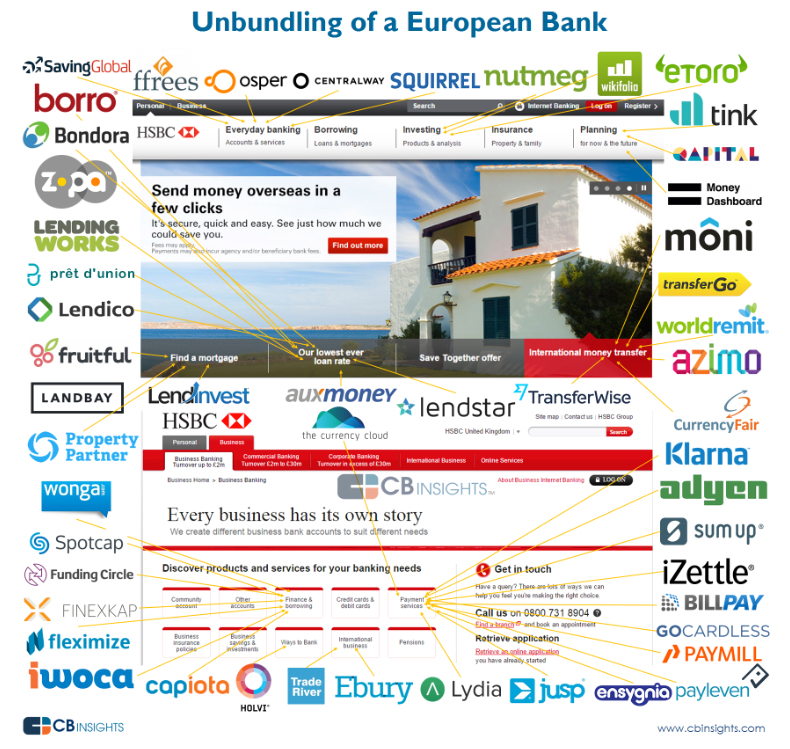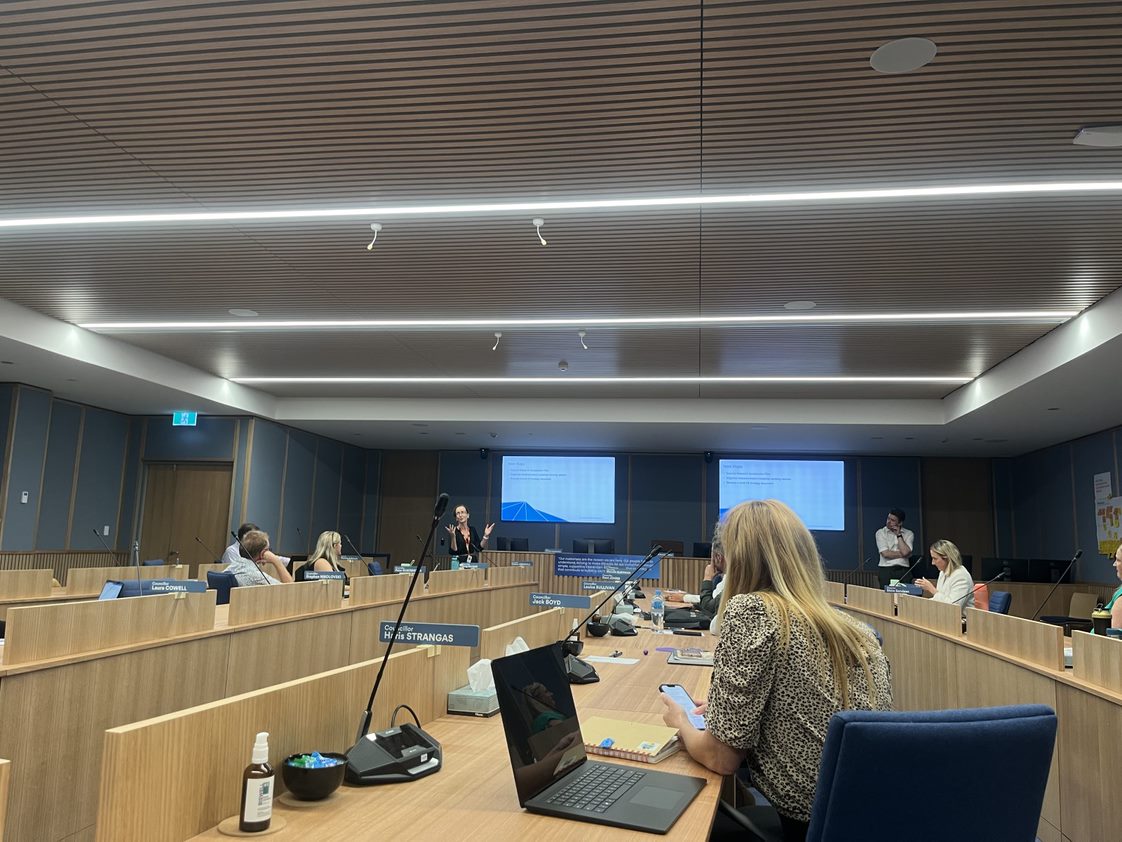By Jeffrey Tobias-
While most large organisations today have “Innovation is important to us” in their shareholder pack, the realty is that the “how to do this” is missing. Just saying we want to be more innovative does nothing – it brings out the cynics in the organisation who proclaim “we have heard it all before”.
Here are 10 ways to really make a difference. They come from our experience in working with both large and small organisations. Many are not new. I was interested to listen to a recent webinar from CB Insights that reinforced our view on what are some necessary conditions to corporate innovation. We acknowledge in advance some of their slides.
1. Realise what got you here won’t get you there
First step, realise this is the case. It just is. Your organisation is being disrupted as we speak even if you think it isn’t. The below graph shows the average lifespan of an S&P 500 company over time which is declining.
For most organisations, it’s getting harder to stay on top once you’re there. Part of the reason is because the threats to incumbent organisations are multiplying. So in 2000 during the first dotcom boom, the cost to launch a startup was almost $5 million. Compare that with the unbelievably small cost of launching a start-up today (as shown in the graph below).
So whether you like it or not, the fact that your organisation is being disrupted today must be absorbed by both your governing board and executive team. They need to accept this fact and move on. Those organisations that buried their head in the sand – are not around today.
2. Accept that technology adoption is on the increase
Embrace it – don’t fight it! Take something like the telephone. If you look at the chart below starting at 1900 and follow the dotted orange line, you will see that the telephone took almost 100 years to get to 90% adoption. And then you look at things like the cell phone or Internet in 1990 and later, and you see how quickly they’ve become ubiquitous within the U.S. population.
These trends are global in nature. We see it happening within business models. This is a great example of Charles Schwab versus Wealthfront; Wealthfront being one of the robo advisors as they’re known, getting to $1 billion in one-third the time of Charles Schwab. Betterment bested Wealthfront and got to $3 billion in assets very quickly. So it’s technology, it’s business models that work really, really fast today. Even amongst fast-growing companies, the speed is increasing.
3. If you are a large organisation, worry about the little guys not other large organisations
Large organisations tend to worry about other large organisations. However, if you think of yourself as Godzilla, it is likely that King Kong is not going to kill you. You will more likely die by a thousand cuts – an army of emerging players that will attack legacy players at an individual product and service level. The banking sector is a great example. All the big banks know the strategies of the other big banks but it’s the emerging Fintech startups that is the real threat.
4. Don’t visit an Accelerator, and then tell everyone to wear jeans and grow a beard.
It doesn’t work. While the field trip to the accelerator might be fun, how does it really translate back into the organisation? It’s like what people say about social media “Isn’t it amazing what people are doing nowadays” and then not doing anything different. Remember, 95% of those start-ups in the Accelerator will fail. Sobering thought. What is more important is to think about how methodologies like the Lean Start-up, the basis for most start-ups, can be brought into your organisation in a meaningful way. Be very clear – your large organisation is not a start-up. But there are definite learning from the start-up world that you can absorb and institutionalise.
5 Remove “Yes but” and replace with “Yes and…”
Sound too simple? This is game changing. “Yes but” are the two most powerful innovation killers in the English language. And they roll off our tongue. But this not only stifles innovation, it kills it. Imagine the employee going to his/her boss three times in a row with a disruptive idea and each time being faced with “Yes but”. What happens the fourth time? He/she never goes back. Indeed, he/she starts polishing up their LinkedIn profile and leaves – why would they stay? Get everyone in the organisation to take a pledge “I will never use the words yes but, ever again”. You will be amazed at the difference this will make.
Five more next time……
















